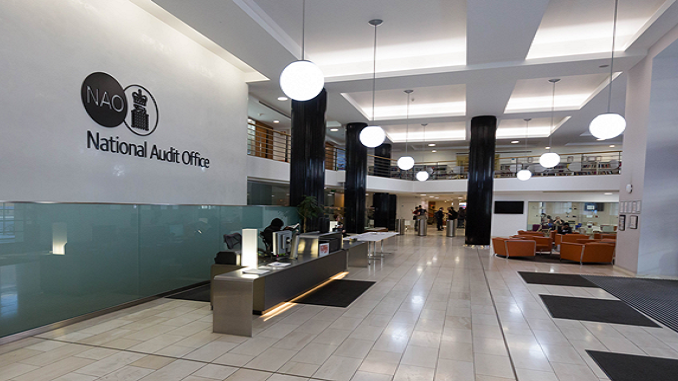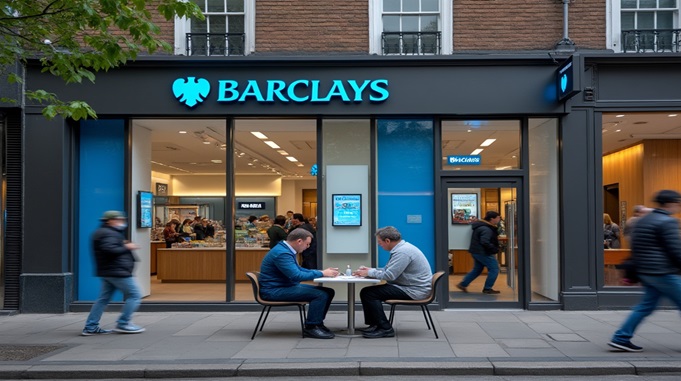
The National Audit Office (NAO) have just made public their most recent audit, that being an “Investigation into the Bounce Back Loan Scheme”.
Just so you know, I offered my services to the NAO which was accepted and I gave their team feedback and an insight into the problems being faced by the never ending stream of business owners who have tried to and/or who have successfully applied for and received a Bounce Back Loan.
I did so as I felt it was important they heard from the “other side of the fence” so to speak and to give a voice to applicants, rather than just lenders, banks and those running/overseeing the Bounce Back Loan scheme.
I’ve Offered My Input Into the NAO Bounce Back Loan Investigation
My Input Into the National Audit Office Investigation into the BBL Scheme
As I expected, the National Audit Office have performed the audit with their usual gusto and independence and below you will find a summary of that audit. If on the other hand you want to read the entire 51-page document on their audit you can do so HERE:
Key:
“The Department” = HM Treasury
“The Bank” = British Business Bank
Scheme Performance
The Department and the Bank expect the Scheme to have lent between £38 billion to £48 billion by 4 November 2020, substantially more than it initially expected.
The three business loan support schemes have provided around £55.3 billion in loans between March and September. This is close to the total lent to small- and medium-sized enterprises (SMEs) in all of 2019 (£57 billion).
HM Treasury data shows that at 6 September, the Scheme had approved more than 1.2 million loans to businesses, totalling £36.9 billion. By 10 May, the end of the first week of operation, 268,000 loans totalling £8.4 billion were approved, increasing to £21.3 billion and 699,000 loans by the end of the first month.
When launched, the Department and the Bank expected Scheme take-up of between £18 billion and £26 billion.
As of 7 September, around 90% of the loans under the Scheme went to very small (micro) businesses located across the UK.
Micro businesses (turnover below £632,000) received £29.4 billion from 1,039,000 loans.
Sole traders, a legal form that small businesses can take, received £6.4 billion from 297,000 loans, representing 18% of the total support by value.
Most of those receiving support were also private limited companies (75% of the total support by value). The geographic distribution of the loans across the UK is in line with the overall distribution of business.
A split by industry shows that real estate, professional services and support activities received the largest amount of support from the Scheme – £8.5 billion from 283,000 loans.
Based on HM Treasury data, lenders approve loans for existing business customers within 24 to 72 hours but approval times for new customers take substantially longer.
Lenders are expected to approve and make payment of loans within 24 hours, or in some cases 48 hours if further anti-fraud checks are required. The approval time applies only to existing business customers.
Neither HM Treasury nor the Bank monitor lenders’ approval time for existing personal customers or new customers. Feedback from lenders during the design process indicated that applications by existing personal customers would take between two and four days to complete if applicants were able to provide the necessary information.
Recent feedback from two large lenders indicates that existing personal customer processing times may take longer than anticipated at launch and new customers may take between four and 12 weeks to process.
This is because of the volume of applications, and COVID-19-related operational constraints. The volume of lending under the schemes exceeded the average monthly lending activity in pre-COVID-19 times.
Scheme set-up and administration
The Scheme was launched within two weeks of the Chancellor of the Exchequer (the Chancellor) proposing it to the Department and the Bank, but without detailed objectives.
The Chancellor proposed the Scheme on 21 April, and it was launched 4 May.
The Scheme was launched quickly to address businesses and trade bodies’ concerns that some of the smallest businesses had acute cash flow issues and were struggling to access finance.
According to a survey conducted by the Association of Chartered Certified Accountants in mid-April, one-third of businesses would probably not be able to access enough cash to last more than two weeks of lockdown.
Owing to the pace of the Scheme’s launch, HM Treasury did not produce a business case; the Scheme also lacked clear objectives beyond the aim of fast financial support for smaller SMEs, which makes measuring the Scheme’s success a challenge.
The Scheme has less strict eligibility criteria than CBILS and CLBILS, to improve quick access to finance for smaller SMEs. This increases credit and fraud related risks.
The Scheme facilitates faster lending, removing credit and affordability checks by banks and allowing businesses to self-certify their application documents.
The application process requires businesses to confirm they are impacted by COVID-19 and are able to repay the loan. Lenders are required to conduct anti-fraud, anti-money laundering and ‘know your customer’ checks on loan applications.
The Bank takes assurance from lender accreditation due diligence and post-accreditation audits that lenders comply with the Scheme rules. To help lenders mitigate fraud risks, the Bank established fraud prevention forums with a wide group of stakeholders to share best practice and aid implementation of additional fraud measures.
The Bank was able to have a reporting system in place at launch and it took about a month to fully operationalise it. The reporting system (the portal) allows the Bank to collect the data needed to administer guarantees in the event of borrower default.
It was not designed to monitor risks or prevent fraud in real-time, with lenders performing checks. While the portal was in place at Scheme launch, automatic reporting was not; this meant lenders had to manually upload data on individual applications, which was a slow process owing to their volume.
In order to assist with Scheme monitoring, HM Treasury put in place a database collecting daily reports directly from lenders, but at an aggregate level only.
The Bank implemented automated reporting by mid-June, which allowed lenders to provide data in bulk. However, the information held on the Bank’s and HM Treasury’s systems do not reconcile owing to the time and type of data collected.
The Bank was not able to prevent duplicate applications across lenders for the first month of the Scheme. The Bank highlighted in its Reservation Notice that there was not enough time to agree with lenders a methodology to prevent duplicative applications before launch.
The Bank worked with lenders and counter-fraud groups to develop this methodology and it was implemented on 2 June, almost one month after the Scheme’s launch.
The Bank and the Department identified, based on a fraud organisation’s estimate, that up to 2.3% of approved applications were duplicates before the solution went live
The Bank’s preliminary assessment of the administrative costs of the three COVID-19 business loan support schemes is £75 million by the end of 2024-25.
The assessment suggests a cost of £20 million for the year ending 2020-21. This includes the Bank’s own delivery costs, mainly staff, as well as external advisers and outsourced operations, such as reconciling interest payments.
The cost does not include the Department and HM Treasury’s costs. The Bank explained to us that many costs, like the outsourced operations or the portal, are interlinked and allocation between the schemes is difficult.
Based on the Bank’s current cost allocation between the schemes, it estimates the Scheme’s cost to total £9 million by the end of 2020-21 and £32 million by the end of 2024-25.
The Bank’s estimates are highly likely to change as the level and scope of activities are uncertain and will only become clearer after May 2021 when borrowers start repaying loans.
The Department estimates that offering the loans interest-free for the first year will cost around £1 billion.
Under the Scheme terms, government pays the borrower’s interest costs for the first 12 months directly to the lender. This payment is a grant and excludes any capital repayments. After the first year, borrowers will need to make repayments (capital and interest) up to the end of the loan, in line with their arrangement with their lender.
As of September 2020, the Bank estimates the cost of covering borrowers’ first years’ interest to be £1,068 million; this will rise as more loans are issued
Value For Money Risks
Credit risk: The Scheme has a low level of credit and customer checks, increasing the likelihood of some businesses not being able to repay loans and therefore leading to taxpayer losses.
A credit risk is the risk that an eligible borrower does not repay a loan. The Scheme relies on businesses self-certifying application details with limited verification and no credit checks performed by lenders for existing customers.
New customers or existing personal account customers may generate additional credit and customer checks depending on the lender’s business processes.
The lower level of customer checks increases the speed of delivery. According to the Department, “the fact that businesses that were unviable before COVID-19 may be able to access the Scheme owing to the absence of external credit checks, […], creates significant risks around value for money, propriety and potentially regularity …”
Fraud risk: Government recognises that the decision to provide funds quickly leaves taxpayers exposed to a significant residual fraud risk, even after lenders have implemented mitigation strategies. Fraud results from dishonesty which can be a false representation or a failure to disclose information with the intention to cause financial gain or loss such as applications by ineligible businesses.
The Bank assessed the Scheme risks before launch and instructed PricewaterhouseCoopers LLP to conduct a risk review.
The review found that, while some risks can be mitigated, there remains a “very high” level of residual fraud risk. Based on feedback from lenders, the adviser summarised the residual external fraud risk causes as: self-certification; multiple applications; lack of legitimate business; impersonation; and organised crime.
The nature of the Scheme places the main responsibility for managing fraud risk on the lenders as part of the loan approval process.
To support lenders in managing fraud-related risks, the Bank established fraud prevention forums with the lenders and a wider group of stakeholders, to share best practice and aid implementation of additional fraud measures.
From October 2020, the Bank, alongside the Department and lenders, will utilise the reporting portal to provide a monthly fraud report.
This will provide details on: prevented loss; detected loss; errors; and recoveries.
The Cabinet Office’s Government Counter Fraud Function believes fraud losses are likely to be significantly above the general estimates of public sector fraud levels of 0.5% to 5%. The fraud risks were also highlighted in, and contributed to, the Bank’s Reservation Notice and the Department’s request for a ministerial direction.
As a result of credit and fraud risks, the Department and the Bank’s preliminary central estimate is that 35% to 60% of borrowers may default on the loans but the estimate is highly uncertain. Government’s default estimates at Scheme launch ranged between 30% and 75%.
The latest estimates, including those including those by the Bank and the Office for Budget Responsibility, have widened to between 15% and 80% depending on the UK’s economic performance. According to the Bank, credit and fraud risks are interrelated and therefore it did not assess them separately.
The Department’s 2019-20 annual report and accounts highlights likely total credit and fraud losses of between 35% and 60%, based on historic losses observed in prior programmes which most closely resemble the Scheme.
Assuming the Scheme lends £43 billion, this would imply a potential cost to government of £15 billion to £26 billion.
However, actual losses may differ from those forecast and indications of the extent of credit losses and fraudulent applications will not become apparent until borrowers are due to start repaying their loans. Loan repayments begin from 4 May 2021 as government is paying interest on all loans for the first 12 months.
Recovery process: Loans are likely to be written off more quickly than for other COVID-19 related business loan support schemes, but HM Treasury has not finalised yet how lenders should collect overdue loan repayments. Lenders are required to pursue “appropriate recovery processes” in line with their existing standards under the terms of the guarantee agreement.
The Scheme terms give lenders a 12-month time limit after they have issued a formal demand on the borrower to pursue outstanding amounts. However, claiming on the government guarantee is not conditional on having completed the recoveries process – lenders are able to make a claim on the government guarantee “within a reasonable time period” following the first formal demand date, or sooner, if lenders believe “no further payment is likely”.
Government provides a 100% guarantee to lenders owing to the absence of credit checks, but this reduces the lenders’ incentives to recover money from borrowers.
Moreover, the Scheme does not include actions to recover outstanding debt after the 12-month time limit, for example by requiring lenders to continue recovery processes in exchange for a fee. The recovery process has been agreed with lenders on a principles-level and HM Treasury expects to agree specific operational details by winter 2020-21.
Crowding out: The five largest UK lenders provided the largest share of loans under the Scheme, increasing their foothold in the SME lending market; this risks having a negative impact on competition.
The Bank’s data shows that the five largest UK lenders (Barclays, HSBC, Lloyds/Bank of Scotland, NatWest/ RBS and Santander) provided £31.3 billion of loans under the Scheme, while the remaining 18 lenders were responsible for £3.9 billion.
The five largest UK lenders are responsible for 89% of the value of the loans distributed. The Bank of England estimates the total SME debt to be £167 billion, with the big banks accounting for 65% of this lending. The Bank and the Department raised concerns that the Scheme’s terms are making it uncompetitive for smaller lenders to compete with incumbents, which in turn has a negative impact on competition in the SME lending sector.
One of the Bank’s key objectives is to help create a more diverse finance market for smaller businesses, with a greater choice of options and providers. The Bank is seeking to mitigate this risk by broadening the number of lenders under the Scheme.
The Scheme had seven accredited lenders at launch and had 23 by 18 September 2020
Concluding remarks
Once government decided to support small businesses facing cash flow problems owing to the pandemic, it moved very quickly to set up a scheme. It prioritised one aspect of value for money – payment speed – over almost all others and has been prepared to tolerate a potentially very high level of losses as a result.
These losses can stem from businesses wanting to pay back loans but finding themselves unable to, through to organised criminals taking out loans with no intention of ever paying them back.
The Scheme achieved its initial objective of quickly supporting small businesses, but a lack of more detailed Scheme-specific objectives will make it difficult to measure its ultimate success.
Systems and processes have evolved since the Scheme launch but much hard work remains over the coming months and years to ensure that the risks to value for money are minimised.
This work must include implementing a robust debt collection plan with lenders and fraud investigation arrangements. Government should also take this opportunity to consider now the controls it would put in place to protect against fraudulent abuse for any future schemes.
Applying for a Bounce Back Loan
If you are new here and are looking for a list of banks that are accepting new customers then click HERE.
CEO Email Addresses
One way to get some action or some form of update from a bank when you have been waiting a long time for a BBL or bank account (including feeder and servicing accounts updates), is to contact the CEO of the bank and a full list of CEO email addresses are on this page of the website








